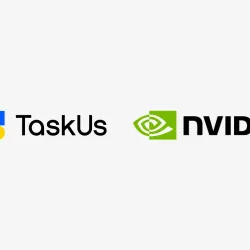Industry Knowledge
Account Takeover Detection: How to Stay One Step Ahead of Fraudsters
Know more about Account Takeover Fraud Detection and how it prevents negative business impact.
As online transactions and interactions exponentially increase, so does the rate of cybercrimes. One of the most prevalent and damaging types of cybercrime is Account Takeover (ATO) Fraud, which according to SEON, happens to 22% of US adults. What is even more alarming is that ATO attacks continue to skyrocket and become more sophisticated. Sift’s Digital Trust & Safety Index records a whopping 131% increase in ATO fraud detection in 2022 from 2021.
How does Account Takeover Fraud happen? How can businesses prevent or mitigate associated risks?
What is Account Takeover Fraud?
Account Takeover Fraud refers to the unauthorized access and control of someone’s account, typically for financial gain. It occurs when cybercriminals gain illicit access to a user's account credentials, enabling them to impersonate the account holder and carry out fraudulent activities.

Unauthorized Transactions
Once fraudsters gain access to an account, they initiate unauthorized transactions—making purchases, transferring funds, or conducting financial transactions—without the account holder's consent.

Identity Theft
ATO Fraud often involves the theft of personal information from the compromised account. Fraudsters can use this information to assume the account holder's identity and engage in further fraudulent activities, such as opening new accounts or applying for credit.

Illegal Account Changes
Fraudsters may modify account details, such as shipping addresses, contact information, or payment methods, to redirect deliveries, intercept sensitive communications, or facilitate other fraudulent activities.
How Does Account Takeover Happen?
Account Takeover Fraud can happen through various techniques employed by cybercriminals. These tactics allow cybercriminals to gain unauthorized access and misuse the accounts for their own illegal activities. Some common methods include:

Phishing
In this approach, fraudsters send deceptive emails, text messages, or direct messages to trick users into revealing their login credentials or other sensitive information. These messages often appear to be legitimate communications from reputable organizations, such as banks or online retailers.
Spear Phishing is a targeted form of phishing in which attackers pose as trustworthy individuals or entities to deceive specific individuals or organizations. It has become so widespread that out of 1,350 organizations, half fell victim to spear phishing attacks.

Credential Stuffing
Cybercriminals exploit users' tendency to reuse passwords across multiple platforms. They obtain account credentials from previously compromised databases and attempt to use those credentials on various websites or services to gain unauthorized access.

Social Engineering
This method involves psychological manipulation or deception of individuals to divulge sensitive information. For instance, fraudsters may impersonate customer service representatives and trick users into providing their account details or passwords.

Malware
Cybercriminals use malicious software, such as keyloggers or spyware, to capture a user's keystrokes or screen activity, thus obtaining login credentials and other sensitive information.
Without proper ATO fraud detection, businesses can experience insufferable damages.
In fact, companies experience a loss of $11.4 billion from failed account takeover detection.
Account Takeover impacts various industries and verticals such as cryptocurrency exchanges, banking, e-commerce sites, social media platforms, and online marketplaces. Compromise of user accounts can cause data breaches and unauthorized transactions, which ultimately compromise their clients' trust.
ATO can also significantly impact individuals, even when conducting supposedly safe transactions on secure sites. Instances of reusing credentials, phishing, and social engineering attacks are some of the ways how bad actors access someone's account.
What are Some Best Practices in ATO Fraud Detection?
The best way to fight fraudsters is to continuously adopt creative ways to outsmart them. Implementing security features such as multi-factor authentication (MFA) and reinforcing strong password policies, and user awareness and education are some preventive measures to protect your employees’ and customers’ data from criminal attacks.
Other ways include:
- Implementing account lockouts and suspicious activity monitoring
- to detect and flag suspicious activities, such as multiple failed login attempts or login attempts from unusual locations or devices. Enforce temporary account lockouts or require additional verification steps when suspicious activity is detected.
- Leverage fraud analytics and machine learning technologies
- to identify patterns, anomalies, and potential Account Takeover Fraud incidents. These technologies help detect fraudulent activities and adapt to evolving attack techniques.
- Engage with cybersecurity experts or partner with third-party security vendors
- specializing in Account Takeover Fraud prevention. They provide expert advice, conduct security assessments, and offer tailored solutions based on the organization's needs.

Human + Technology ATO Fraud Detection at TaskUs
We use advanced data-driven technology, which includes AI/ML models in fraud analytics, to prevent fraudulent activities from occurring instead of just reacting to them. We make sure that legitimate customer transactions are not blocked in the process. Although technology is crucial in our operations, human input is still necessary for reviewing analytical results to make decisions in areas where the technology may not be able to detect potential fraud. Combining technology and human expertise is our strongest defense against cybercriminals. Our team of experts is proficient in detecting anomalies that technology may miss and ensuring seamless consumer experiences.
Recognized by the Everest Group as the World's Fastest Business Process (Outsourcing) Service Provider and a Major Contender in Financial Crime and Compliance (FCC) Operations – Services PEAK Matrix® Assessment in 2022, TaskUs is here to address your account takeover fraud detection requirements. Contact Us today to learn how we can help your organization establish robust monitoring processes, implement best practices, and stay ahead of evolving regulatory requirements.
Because we understand what matters most to our clients, our Risk + Response team formulates innovative account takeover detection solutions and methods to battle against bad actors across various industries:
- Fraud Detection Response
- We monitor platform activity for signs of ATO fraud and respond to user-reported complaints, escalating high-priority matters for immediate review. Our certified fraud investigators identify systemic threats and quickly manage cases to maintain tolerance limits.
- NFT Marketplace Security
- We verify creators, authenticate project leaders, and monitor for counterfeit tokens to protect your users from rug pulls, fakeouts, and other scams.
- Play-to-Earn Gaming Integrity
- We monitor game activity, flag suspicious behavior, and investigate suspected policy abuse or account takeover incidents.
- Chargebacks & Disputes Account Takeover
- We deploy workflows, automation, and case management tools to quickly process chargebacks and disputes, validate transactions, and challenge when warranted.
We understand the need to stay ahead and constantly innovate new technology, techniques, and training methodologies. Let Us help you manage the account takeover risks so you can focus on growing your business.
- 1^Q3 2022 Digital Trust & Safety Index
- 2^2023 Cybersecurity Industry Statistics: Account Takeover, Ransomware, Data Breaches, BEC & Fraud
References
We exist to empower people to deliver Ridiculously Good innovation to the world’s best companies.
Services








